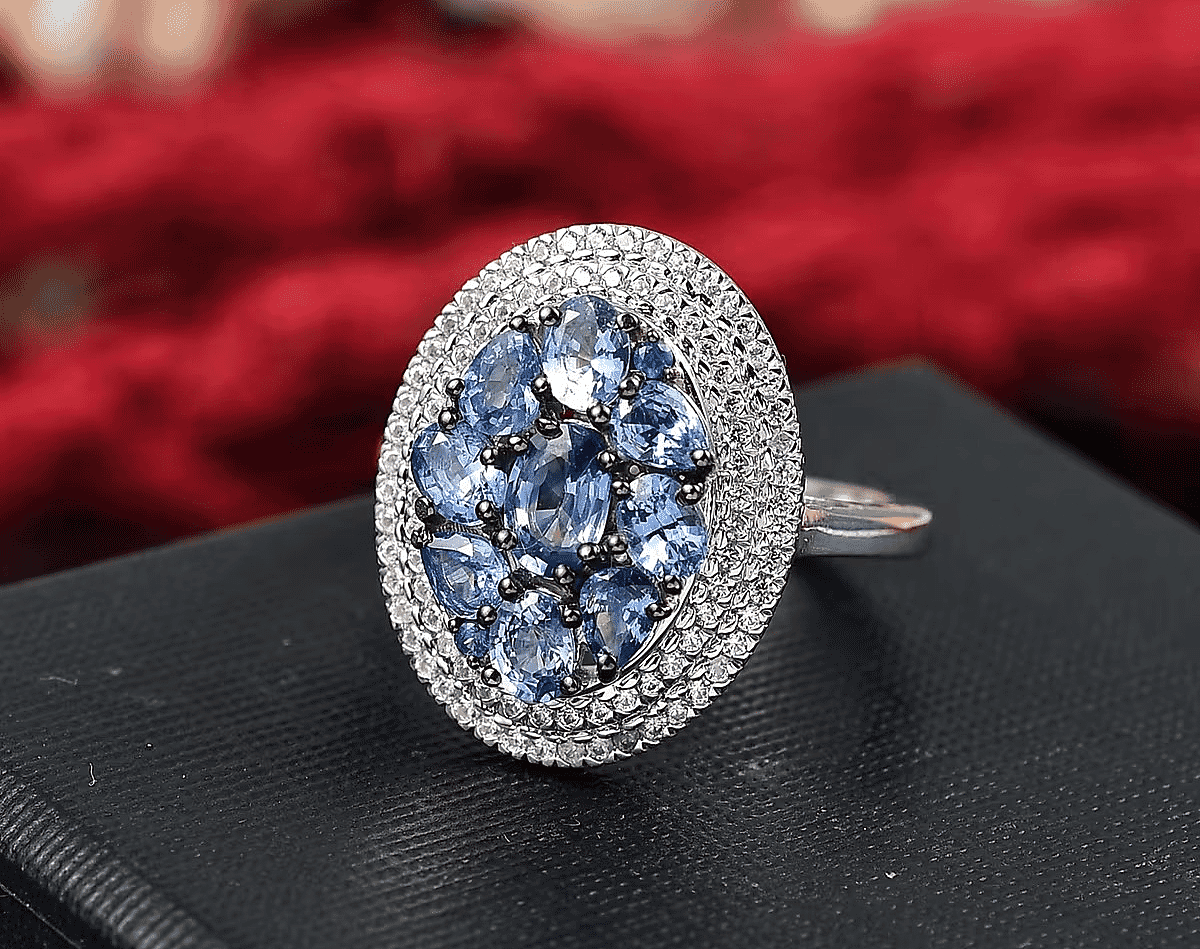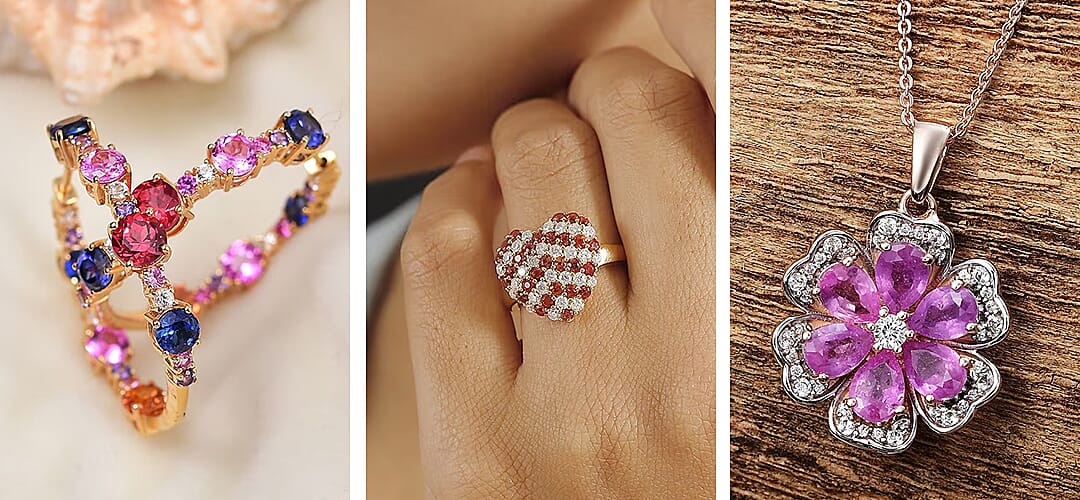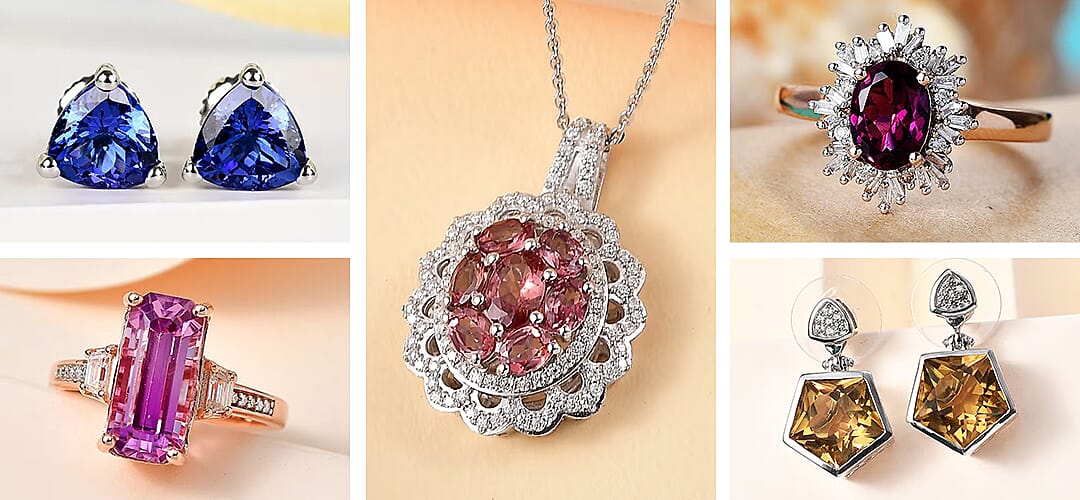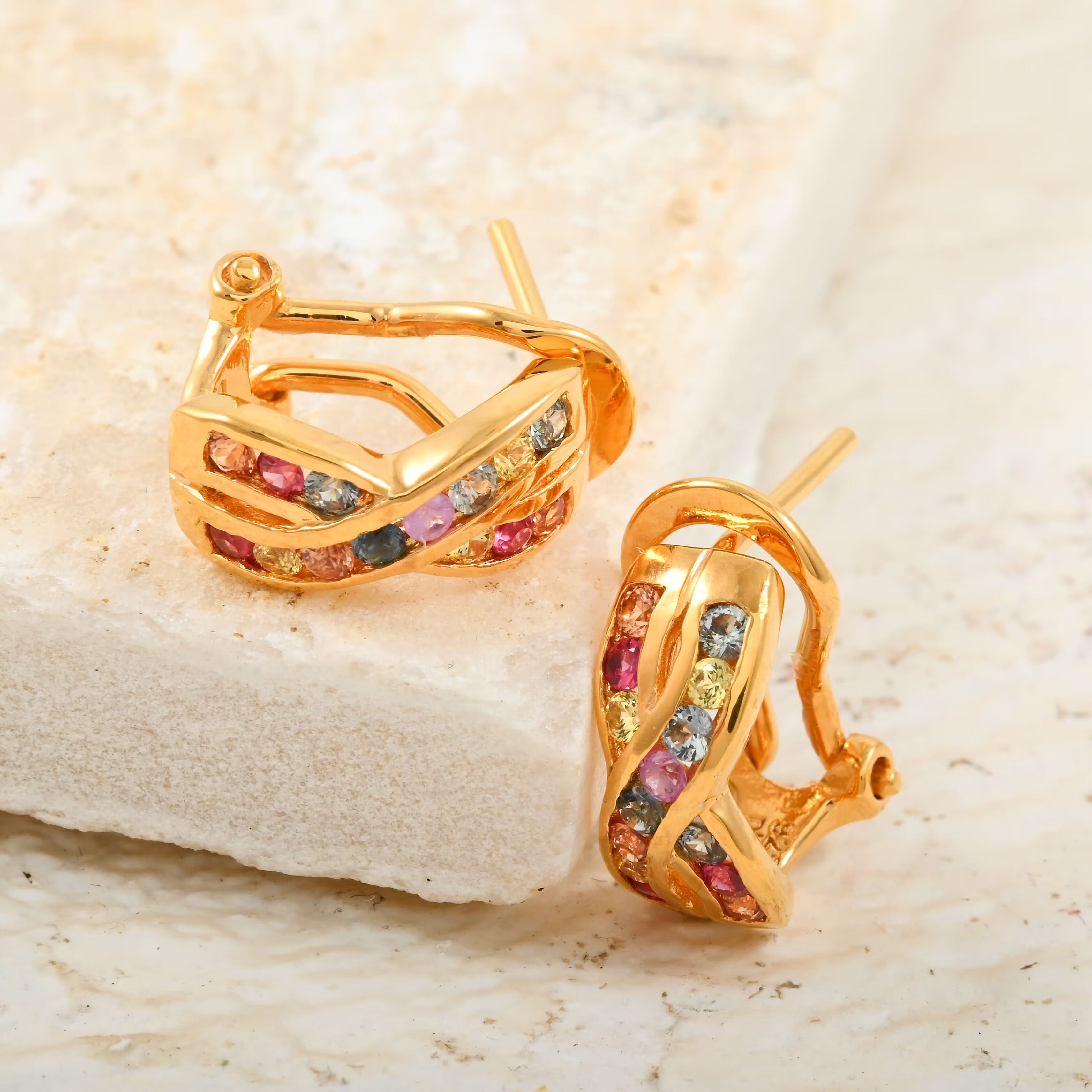
Sapphire Gemstone
Sapphires are treasured across the globe for their timeless elegance, exceptional hardness, and captivating hues. Best known for their royal blue shade, sapphires also appear in an array of stunning colors. Whether deep navy, vibrant pink, or golden yellow, each sapphire radiates luxury and grace. Their unmatched brilliance and durability make them a beloved choice among jewelers and collectors seeking enduring beauty.
TABLE OF CONTENTS
1. Why Are Sapphires So Important?
2. Determining Sapphire's Value
3. Sapphire Treatment
4. Why Are Different Grades of Sapphire?
5. Caring for Sapphire
6. Who Can Wear Sapphire?
7. How Does Sapphire Compare to Other Gemstones?
8. Properties Of Sapphire
9. Sapphire Facts
10. How to Choose a Sapphire?
11. Sapphire FAQs
IMPORTANCE
Why Are Sapphires So Important?
Sapphires are revered for their beauty and symbolic significance across history, culture, and spirituality. Often associated with royalty, they symbolize wisdom, virtue, and fortune. Culturally, they are believed to have healed properties, promoting calmness and peace of mind. In Vedic astrology, the blue sapphire, or Neelam, connected to Saturn, brings prosperity, health, and longevity to those it suits astrologically, enhancing its multifaceted value.
Sapphires are corundum, the same mineral that forms rubies. Their blue color is primarily due to trace amounts of iron and titanium. The most famous sources of sapphires include:
1. Kashmir, India: Known for producing some of the finest sapphires, with a velvety blue color and excellent clarity.
2. Burma (Myanmar): Renowned for sapphires with a deep blue hue and superior quality.
3. Sri Lanka (Ceylon): Famous for producing sapphires of various colors, including the prized cornflower blue.
4. Madagascar: A newer source, offering sapphires with diverse colors and good clarity.
VALUE
Determining Sapphire's Value
The value of a sapphire is determined by several factors, often referred to as the "Four Cs": color, cut, clarity, and carat. Additionally, the origin and treatment of the sapphire can significantly influence its value.
COLOR
Sapphire value is primarily determined by color, with the vivid "cornflower blue" being the most prized. They also come in other shades, called "fancy sapphires," such as pink, yellow, green, and white. Key color factors include hue (pure blue with few secondary tones is ideal), tone (medium to medium-dark is preferred), and saturation (vivid, intense colors are the most valuable).
CLARITY
Clarity in sapphires refers to the presence of internal inclusions or external blemishes, with fewer inclusions generally increasing the stone's value. "Eye-clean" sapphires, which show no visible flaws to the naked eye, are especially prized. Common inclusions include needles, crystals, and color zoning, though some, like rutile silk, can enhance beauty by producing a star-like effect called asterism.
CUT
The cut of a sapphire significantly affects its brilliance and how light reflects within the stone, enhancing its luster and natural beauty. Common cuts include oval, cushion, and round, each chosen to highlight color and reduce visible inclusions. A well-cut sapphire features symmetrical facets and balanced proportions to ensure even light reflection.
CARAT
Carat refers to the weight of the sapphire. Larger sapphires are rarer and, therefore, more valuable. However, color and clarity often outweigh size when determining value.
TREATMENT
Sapphire Treatment
To enhance their appearance, most sapphires undergo some form of treatment. Common treatments include:
Heat Treatment: The most common and widely accepted treatment to improve color and clarity.
Diffusion Treatment: A process that adds color to the surface of the sapphire, often used to create blue or orange hues.
Fracture Filling: A method used to fill cracks and improve the stone's clarity.
Treated sapphires are less valuable than untreated ones, though they are more affordable and widely available.
Quality Grades
Different Grades of Sapphire:
Sapphires are graded based on their quality:
AAA (Top Grade):
Exceptional color, cut, and clarity. These are rare and highly valuable.
AA (Fine Grade):
High-quality sapphires with slight inclusions or color variations.
A (Commercial Grade):
Sapphires with visible inclusions or a less desirable color.
Storage
Caring for Sapphire
Sapphires are durable, ranking 9 on the Mohs hardness scale, second only to diamonds. However, they still require proper care:
• Cleaning:
Clean sapphires with warm, soapy water and a soft brush. Avoid harsh chemicals and ultrasonic cleaners.
• Storage
Store sapphires separately from other gemstones to prevent scratching.
• Regular Checks:
Regularly check the setting of sapphire jewelry to ensure the gemstone is secure.
IDEAL CHOICE
Who Can Wear Sapphire?
Sapphire is traditionally associated with September, making it the birthstone for individuals born in this month. However, anyone can wear sapphire, particularly those seeking the gemstone's metaphysical benefits. In astrology, blue sapphire (Neelam) is recommended for individuals with favorable Saturn positions in their birth chart. It is advisable to consult with an astrologer before wearing blue sapphire for astrological purposes.

Difference
How Does Sapphire Compare to Other Gemstones?
Lab-Created vs. Natural Sapphire:
Lab-created sapphires are chemically and physically identical to natural sapphires but are grown in controlled environments. They are more affordable and typically have fewer inclusions. Natural sapphires, especially those with no treatment, are rarer and more valuable.
Sapphire vs. Tanzanite:
Tanzanite is a new gemstone known for its vibrant blue-violet color. While stunning, tanzanite is softer and less durable than sapphire, making sapphire the better choice for everyday wear.

Properties
Astrological Benefits of Sapphire Gemstone
1. Blue Sapphire (Neelam): Associated with Saturn, it is believed to bring prosperity, health, and protection. However, it is a powerful gemstone that should be worn with caution.
2. Yellow Sapphire (Pukhraj): Linked to Jupiter, it is said to bring wealth, wisdom, and marital bliss.
September Month Gemstone: Sapphire
Sapphire, the birthstone for September, is celebrated for its deep blue hues and symbolizes purity, wisdom, and loyalty. Revered in various cultures for its connection to divine favor, it is thought to protect loved ones and bring inner peace and enlightenment. Due to its impressive durability, sapphire is an ideal choice for jewelry that is meant to be worn daily.
Metaphysical Properties
Sapphires are cherished for their metaphysical properties, believed to enhance mental clarity and focus while also soothing the mind and fostering inner peace. Often used in meditation, these gemstones are thought to facilitate spiritual enlightenment and insight, making them valuable for both cognitive and spiritual enhancement. Their versatility makes them a favored choice in various spiritual practices.
Sapphire Healing Properties
Sapphires are renowned for their diverse healing properties. They are believed to aid in treating physical ailments such as eye issues, blood disorders, and skin conditions. Emotionally, sapphires are used to calm the mind, reduce anxiety, and foster a positive outlook. Spiritually, the blue sapphire is specifically linked to the throat chakra, enhancing communication and self-expression, making it a valuable stone for overall well-being.
Sapphire Facts
MOHS HARDNESS
9
COLOR
Varies from blue to pink, yellow, green, and colorless.
TREATMENT
May undergo additional treatment to improve its brilliance.
ORIGINS
Found in Myanmar, Sri Lanka, and Madagascar.

SELECTION
How to Choose a Sapphire?
When choosing a sapphire, consider the following factors:
1. Budget: Determine how much you are willing to spend, keeping in mind that untreated and high-quality sapphires are more expensive.
2. Purpose: Consider whether the sapphire is for daily wear, a special occasion, or astrological purposes.
3. Color Preference: Decide on the color and hue you prefer. Blue is the most popular, but fancy sapphires offer a range of options.
4. Cut and Setting: Choose a cut that maximizes the stone's beauty and a setting that suits your style.
Sapphire Color Guide
Blue sapphires are the most sought-after, with vivid blue hues being the most valuable. Pink sapphires offer a romantic and elegant appeal, ranging from pale pink to deep magenta. Yellow sapphires are bright and cheerful, often featured in astrological jewelry. Padparadscha sapphires, with their rare blend of pink and orange, are extremely rare and highly valuable.
Color Change Sapphires
These unique stones display different colors under varying lighting conditions—typically blue in daylight and violet under incandescent light—and are highly prized by collectors for their rarity and beauty.
Sapphire FAQ’S
Q. What determines the value of a sapphire?
A. Value is primarily determined by color, clarity, carat, cut, and the gem's geographic origin, with the most prized sapphires showing deep, vivid colors and few inclusions.
Q. Are there different colors of sapphires?
A. Sapphires come in a variety of colors, including blue, pink, yellow, green, and white, with color variations due to different trace elements.
Q. How are sapphires formed?
A. Sapphires are formed from the mineral corundum, with color variations influenced by trace elements like iron and titanium.
Q. What is the significance of sapphires in jewelry?
A. As symbols of nobility and faithfulness, sapphires are popular in fine jewelry for their durability and range of colors.
Q. How should sapphires be cared for?
A. Clean regularly with mild soap and water, avoiding harsh chemicals and extreme temperatures, to maintain their appearance.